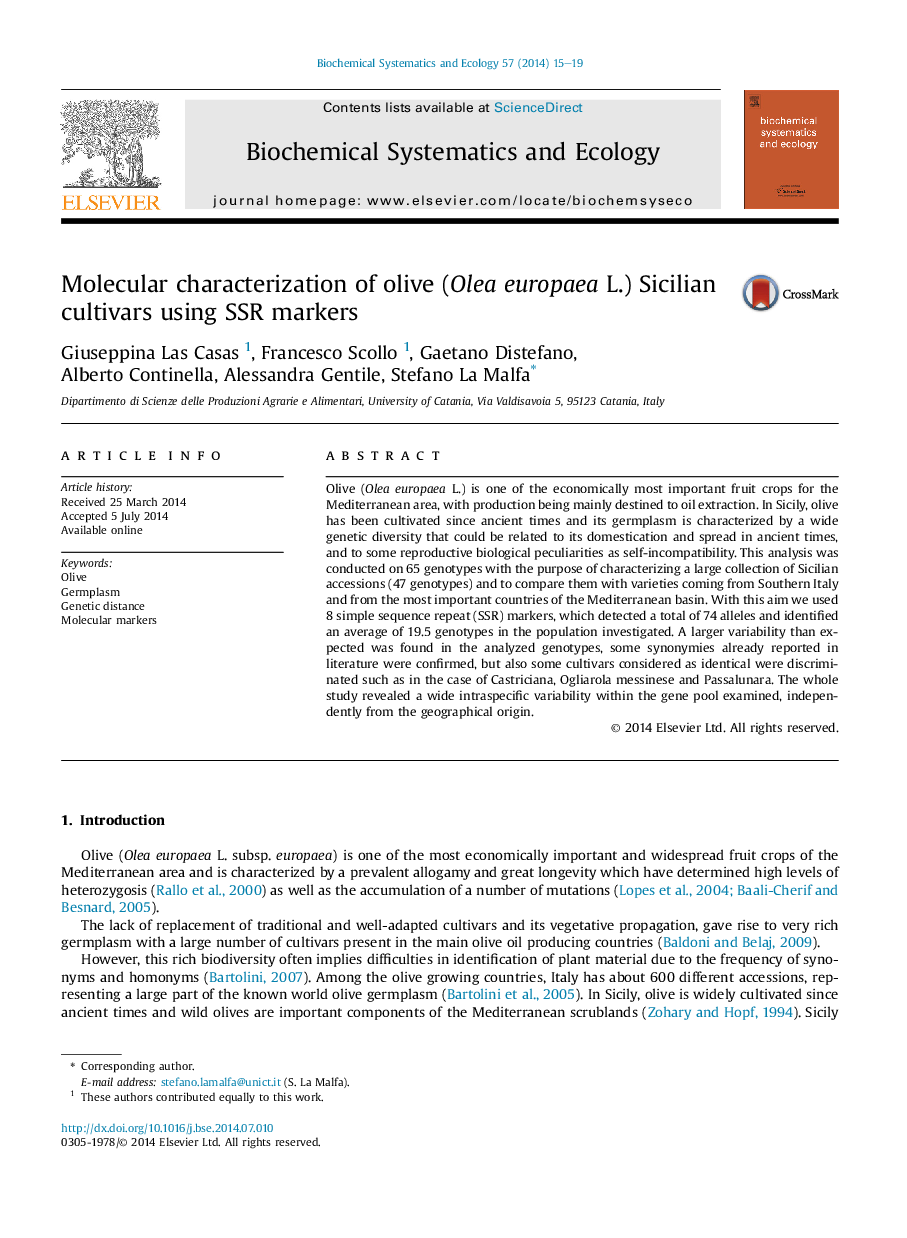| Article ID | Journal | Published Year | Pages | File Type |
|---|---|---|---|---|
| 7768240 | Biochemical Systematics and Ecology | 2014 | 5 Pages |
Abstract
Olive (Olea europaea L.) is one of the economically most important fruit crops for the Mediterranean area, with production being mainly destined to oil extraction. In Sicily, olive has been cultivated since ancient times and its germplasm is characterized by a wide genetic diversity that could be related to its domestication and spread in ancient times, and to some reproductive biological peculiarities as self-incompatibility. This analysis was conducted on 65 genotypes with the purpose of characterizing a large collection of Sicilian accessions (47 genotypes) and to compare them with varieties coming from Southern Italy and from the most important countries of the Mediterranean basin. With this aim we used 8 simple sequence repeat (SSR) markers, which detected a total of 74 alleles and identified an average of 19.5 genotypes in the population investigated. A larger variability than expected was found in the analyzed genotypes, some synonymies already reported in literature were confirmed, but also some cultivars considered as identical were discriminated such as in the case of Castriciana, Ogliarola messinese and Passalunara. The whole study revealed a wide intraspecific variability within the gene pool examined, independently from the geographical origin.
Related Topics
Physical Sciences and Engineering
Chemistry
Organic Chemistry
Authors
Giuseppina Las Casas, Francesco Scollo, Gaetano Distefano, Alberto Continella, Alessandra Gentile, Stefano La Malfa,
